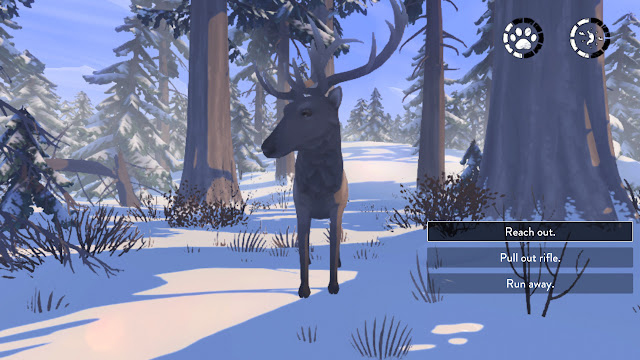The Red Lantern is exactly what is wrong with the content-first obsession that the game industry has. What could have been an immensely powerful, evocative, two-hour-long story of survival and finding truths about oneself via a trial by fire within one of the harshest environments humanity knows, is instead nothing more than a dull and monotonous exercise in repetition.
Roguelikes are to indies what open-world experiences are to blockbuster developers; they’re a framework that offers a safe, commercially-proven way of turning what should be a few hours play into something that takes many, many more hours to work through. Because roguelikes use procedural generation – “randomisation” – in theory, each replay of the game should offer something different. You can never be sure what’s around the next corner or what will happen next. Even when you’ve played the game enough that the same events start to occur, you’re still never sure what order they’ll pop up, meaning that you need to remain on your toes each time. It’s a system that often works, remarkably well. The Mystery Dungeon approach to JRPGs are so enjoyable because the randomisation makes them challenging. Hades is a recent roguelike darling that is so active and vibrant that you often forget that you’re playing randomised levels at all.
The Red Lantern, however, doesn’t work as a roguelike because it wants you to be emotionally involved in what’s going on, and it’s really hard to keep caring when you’re experiencing the same scenes over and over again. You play as a rookie dog-sledder, who has decided to give up her life in the city to challenge herself to survive – even thrive – in the frozen wilderness. She forms a team of herself and five dogs, and then your job is to make guide her across the wilderness while being very aware of her dwindling rations and resources. Opportunities to replenish those supplies come from events, or “challenges” that occur every ten seconds or so, from a rotating list of possible encounters. And it’s here where everything that could have been great about The Red Lantern falls to bits.
The Red Lantern would have been so much more effective in what it wanted to convey if the game were more linear with the encounters, and the game was designed around being completed, rather than replayed. It’s got everything going for it – the melancholic music and the beautiful art and sense of scale. The encounters (the first time) can be heart-racing; there is a scene where a wild boar attacks, and the first time (before I realised that as long as I had a bullet in my gun it would be fine) it was heart-racing to watch my dogs try and menace it and protect me. So many scenes in The Red Lanten are evocative, heartfelt moments of storytelling. The first time. Unfortunately, the developers were stuck between a rock and a hard place with this one, since, if they had have made a linear game that lasted two hours, every other review would be decrying it for how “short” it was. No matter how appropriate a short run time would have been to a game with this kind of story to tell.
I know it’s a tough gig being a game developer when hours played is a key metric and the pundits bleat on about content rather than things that are actually important, like thematic intensity or narrative depth. Taking something that could have been something special and diluting it to give those pundits something to throw onto their backlog isn’t going to help video games develop as an art form, though. The Red Lantern upset me more than most; most games aren’t made by people with the vaguest understanding of art. The Red Lantern, however, clearly is the concept of artists and the vision is compelling. Next time they should try delivering a game that supports the vision, rather than what they think will boost the Metacritic score.










